© 2011-2025 The Avataric Samrajya of Adidam Pty Ltd, as trustee for the Avataric Samrajya of Adidam. All rights reserved.
Posted June 2016
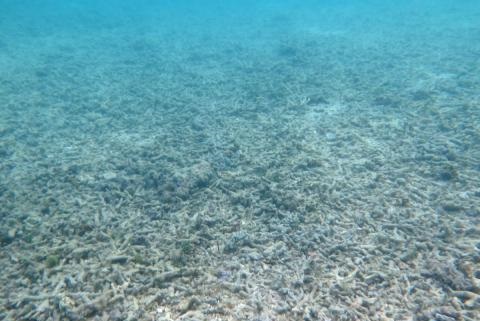
Category 5 Cyclone Winston hit Naitauba almost four months ago. In its aftermath, a lot of our time and energy has been dedicated to repair the extensive damage it caused to roads, utilities, and marine transportation, and to provide safe shelter for all island residents after so many buildings were damaged.
It is only gradually that we are getting a picture of the impact of the cyclone on the reef. Our most recent outing was offshore from Lion’s Lap, a remote area of the island. One major observation made so far is that the impact of the hurricane varies significantly between different sections of the reef.
On many parts of the reef, particularly shallower parts, the cyclone’s impact was like its effect on Naitauba’s forests—shattering in its power. Many of the shallow patch reefs showed major damage—large areas of branching coral were reduced to rubble. Coral is brittle and the strong currents, surges, and wave action of the hurricane simply broke the coral branches. The impacted coral formations range from small delicate branching corals to large coral heads that were broken from their bases, knocked over, or lifted up by the force of the storm. Many coral heads several feet across are now lying upside down like upturned tables on the lagoon floor or on top other corals.
One massive coral head over seven feet in diameter has been rolled on its side. We also saw a large coral formation over six feet in diameter lying on its side like a giant mushroom. It was very sobering.
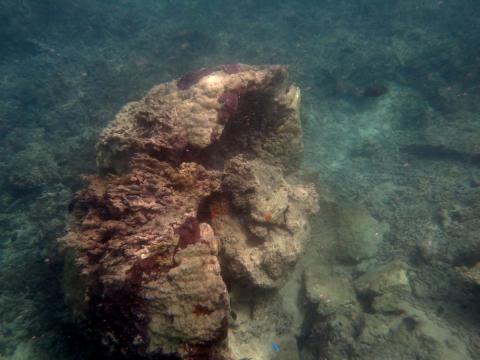
However, when we explored the lagoon on the eastern side of the island, the corals in those deeper waters weren’t so badly hammered. Perhaps because the east side is more accustomed to storms, the impact was less dramatic and visible there. However we did find a coconut palm, complete with its root ball, standing in 20-foot deep water within the lagoon, next to some coral formations about 100 meters offshore from Lion’s Lap.
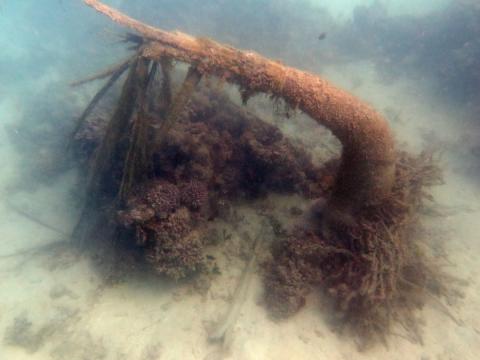
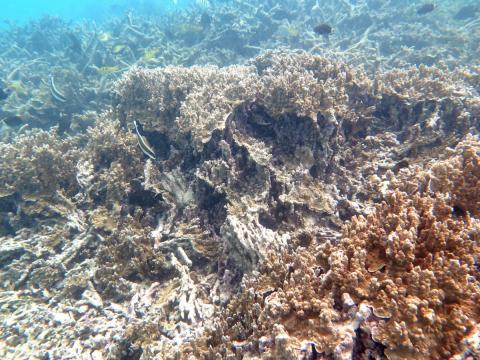
Another observation is that the fish populations were obviously impacted by the damage to the coral, but we are still seeing good numbers of large fish. The photos within this update include a school of snub-nosed pompanos. When they swam over to check us out, their smooth, effortlessly, and graceful movement was a deeply-moving sign of the persistence of life on the reef, even under these trying and rapidly-changing conditions.
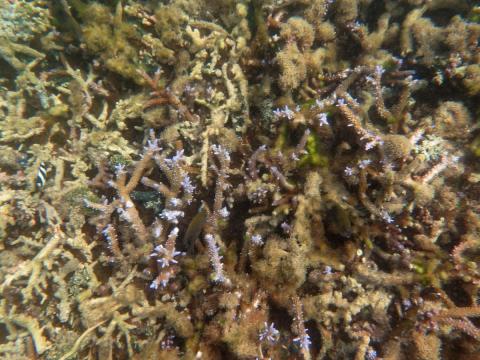
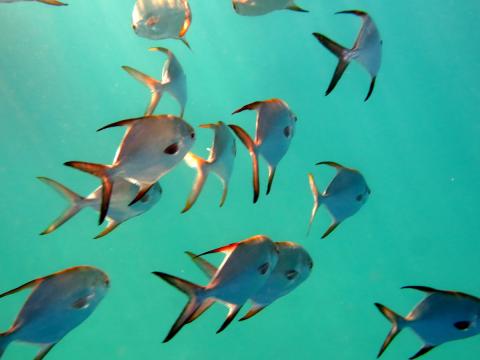
© 2011-2025 The Avataric Samrajya of Adidam Pty Ltd, as trustee for the Avataric Samrajya of Adidam. All rights reserved.